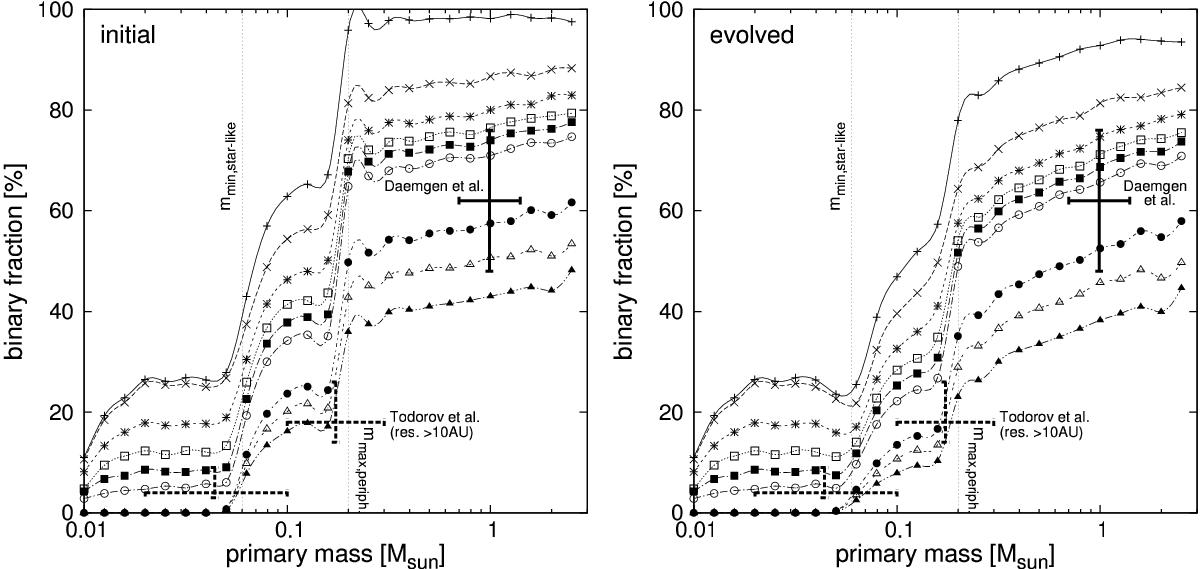Fig. 3

Prediction of the primary-mass dependent binary fraction in dependence of resolution limit, if peripheral fragmentation applies (the discontinuous IMF model in Fig. 1). Left: binary fraction as a function of primary mass for the initial binary population with no dynamical evolution is plotted (Sect. 3.2). The different curves denote the trend for varying survey resolution limits; binaries with separations larger than 0, 1, 3, 5, 7, 10, 50, 100, and 200 AU (top to bottom) are resolved. Binaries with separations smaller than the respective resolution limits are counted as single in the model. The solid cross denotes the Daemgen et al. (2015) estimation that 62 ± 14% of solar-type Taurus members over the full separation range are multiples, in concordance with Kraus et al. (2011) finding that about 2/3−3/4 of their targets in Taurus are binaries or higher order multiples. The dashed crosses are data from Todorov et al. (2014) who resolve separations a> 10 AU. Right: same as left panel but with dynamical evolution in the Taurus-Auriga groups added (see Sect. 3.2).
Current usage metrics show cumulative count of Article Views (full-text article views including HTML views, PDF and ePub downloads, according to the available data) and Abstracts Views on Vision4Press platform.
Data correspond to usage on the plateform after 2015. The current usage metrics is available 48-96 hours after online publication and is updated daily on week days.
Initial download of the metrics may take a while.




